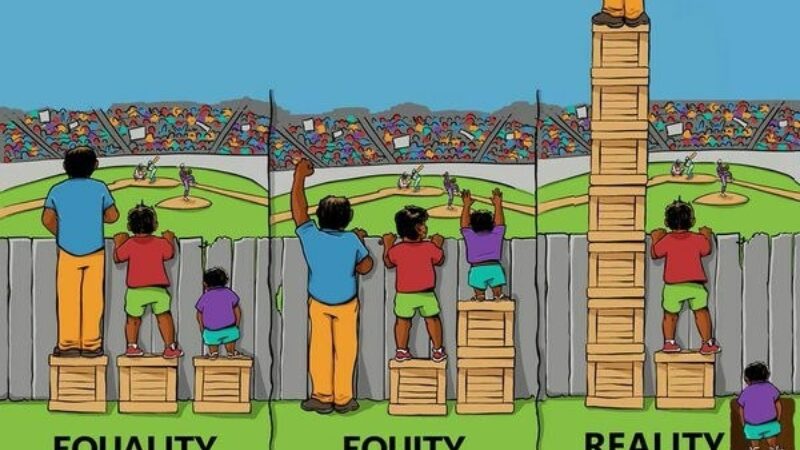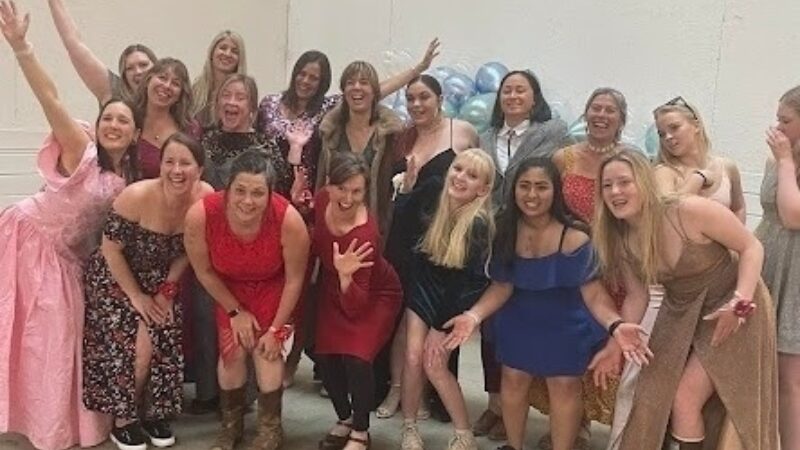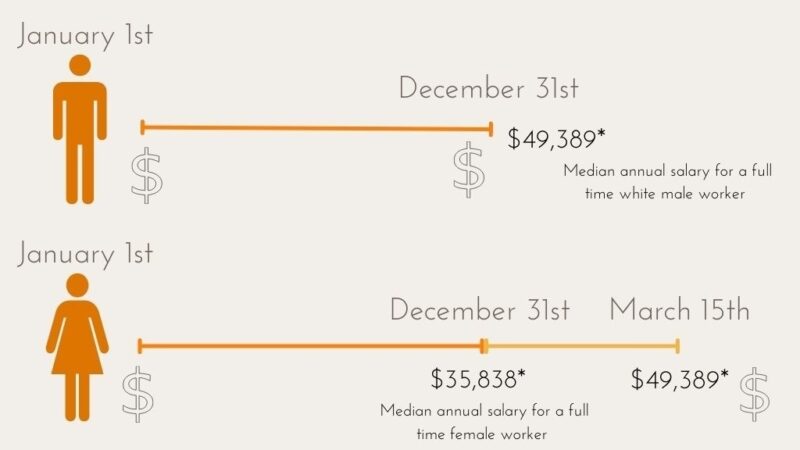PowerHouse Blog
A Discussion on Equity and Equality
November 20, 2017 | By Erika Rasmussen

By Helena Powerhouse, Morgan Marks
There is a need. A need for women in nontraditional occupations and specifically, the skilled trades to build and strengthen Montana’s workforce.
A need for equity and a need for equality, because there is a difference between those two terms. One is making everyone equal through opportunities even though, for factors out of their control, they may not have the same footing to begin with. Providing extra opportunity to those who already have access is not being equitable. Equity is when all people are met where they are, with what they have, and supported in their rising.
I’m sure you’ve heard the term STEM and women in STEM and many funding pushes and efforts to push forward with outreach to young girls. In case you aren’t sure, STEM is short for Science, Technology, Engineering and Mathematics. These fields have traditionally been occupied and held by men.
Let’s drill down a bit though, and talk about the value of apprenticeship and women in STEM related fields. The time-honored training model of apprenticeship works to upskill and train workers, while they earn a paycheck. Technical training or coursework, combined with on-the-job training hours is what makes this model shine. Being thoughtful about program development, listening to employers, understanding the needs and what a skilled worker looks like once trained – that is where the magic lies.
Apprenticeship is employer driven at the heart of it. No opportunity can exist without an employer at the end, sponsoring the apprentice and serving as a mentor. That buy-in must exist to have a successful apprenticeship-training program.
Go ahead, ask it. Why? What’s the benefit to the employer?
 Childcare, being or becoming a mother, priorities with families and home responsibilities, and stigmas that exist against women such as, the skilled trades being a “Man’s World.” There are many other examples and many more we can all rattle off. Instead of staying in that space, I feel it is important to strategically process through the next step – taking action.
How do we support women in their rising?
How do we have difficult conversations about how to better hiring practices to be more equitable and to explain to employers that some people have barriers, but that they are good workers, and to be equitable, employers may need to shift to meet workers where they are, train them, mentor them, and support their skill development?
Not everyone will be on board. Not everyone is on board for a lot of things. That is the way of the world. But – there are many employers, and many people in general, that are willing to shift and many that need support in figuring out how. That is why I am writing this blog to you – as a call to action for your help in finding employers who want to support, train and hire women.
We know there is a need. We know that apprenticeship as a training model can be worked and adapted to what employer’s needs are across sectors. We have seen it happen and have helped create such opportunities.
Now, I hope that you will sign on and have conversations about creating such opportunities for women and vulnerable populations of people with:
Childcare, being or becoming a mother, priorities with families and home responsibilities, and stigmas that exist against women such as, the skilled trades being a “Man’s World.” There are many other examples and many more we can all rattle off. Instead of staying in that space, I feel it is important to strategically process through the next step – taking action.
How do we support women in their rising?
How do we have difficult conversations about how to better hiring practices to be more equitable and to explain to employers that some people have barriers, but that they are good workers, and to be equitable, employers may need to shift to meet workers where they are, train them, mentor them, and support their skill development?
Not everyone will be on board. Not everyone is on board for a lot of things. That is the way of the world. But – there are many employers, and many people in general, that are willing to shift and many that need support in figuring out how. That is why I am writing this blog to you – as a call to action for your help in finding employers who want to support, train and hire women.
We know there is a need. We know that apprenticeship as a training model can be worked and adapted to what employer’s needs are across sectors. We have seen it happen and have helped create such opportunities.
Now, I hope that you will sign on and have conversations about creating such opportunities for women and vulnerable populations of people with:
- Apprenticeships are growing Montana’s workforce for both union and non-union businesses in a broad spectrum of industry sectors in over 60 occupations;
- Apprenticeship lead to increased employee recruitment and retention rates with almost 90% of apprentices staying with their employers after they complete their training programs. The entire point is that an apprentice transitions into a permanent worker and stays on where their apprenticeship occurred;
- Beginning tax year 2018, businesses may earn a $750 tax credit for each new apprentice and $1,500 for each new apprentice who is a veteran;
- Training or upskilling a worker to fit what the business or organization needs in an employee and customizing the experience;
- End-to-end support and expertise from the Montana Registered Apprenticeship program to help businesses design and implement tailor made training programs;
- Marketing support to establish a solid pipeline of talent – tap into pre-apprenticeship opportunities or other channels where a business or employer can access good workers that are interested and ready to be trained and mentored.
 Childcare, being or becoming a mother, priorities with families and home responsibilities, and stigmas that exist against women such as, the skilled trades being a “Man’s World.” There are many other examples and many more we can all rattle off. Instead of staying in that space, I feel it is important to strategically process through the next step – taking action.
How do we support women in their rising?
How do we have difficult conversations about how to better hiring practices to be more equitable and to explain to employers that some people have barriers, but that they are good workers, and to be equitable, employers may need to shift to meet workers where they are, train them, mentor them, and support their skill development?
Not everyone will be on board. Not everyone is on board for a lot of things. That is the way of the world. But – there are many employers, and many people in general, that are willing to shift and many that need support in figuring out how. That is why I am writing this blog to you – as a call to action for your help in finding employers who want to support, train and hire women.
We know there is a need. We know that apprenticeship as a training model can be worked and adapted to what employer’s needs are across sectors. We have seen it happen and have helped create such opportunities.
Now, I hope that you will sign on and have conversations about creating such opportunities for women and vulnerable populations of people with:
Childcare, being or becoming a mother, priorities with families and home responsibilities, and stigmas that exist against women such as, the skilled trades being a “Man’s World.” There are many other examples and many more we can all rattle off. Instead of staying in that space, I feel it is important to strategically process through the next step – taking action.
How do we support women in their rising?
How do we have difficult conversations about how to better hiring practices to be more equitable and to explain to employers that some people have barriers, but that they are good workers, and to be equitable, employers may need to shift to meet workers where they are, train them, mentor them, and support their skill development?
Not everyone will be on board. Not everyone is on board for a lot of things. That is the way of the world. But – there are many employers, and many people in general, that are willing to shift and many that need support in figuring out how. That is why I am writing this blog to you – as a call to action for your help in finding employers who want to support, train and hire women.
We know there is a need. We know that apprenticeship as a training model can be worked and adapted to what employer’s needs are across sectors. We have seen it happen and have helped create such opportunities.
Now, I hope that you will sign on and have conversations about creating such opportunities for women and vulnerable populations of people with:
- Employers you know – maybe this type of training model is something new to them but that would work really well for their current needs and challenges with hiring and retention
- Friends you think may not know about apprenticeship
- Friends that you think might know but that need a reminder or a nudge – hey! I learned about this awesome idea today, called apprenticeship, maybe we can grab coffee and chat about it? (who doesn’t love getting together with girlfriends)



